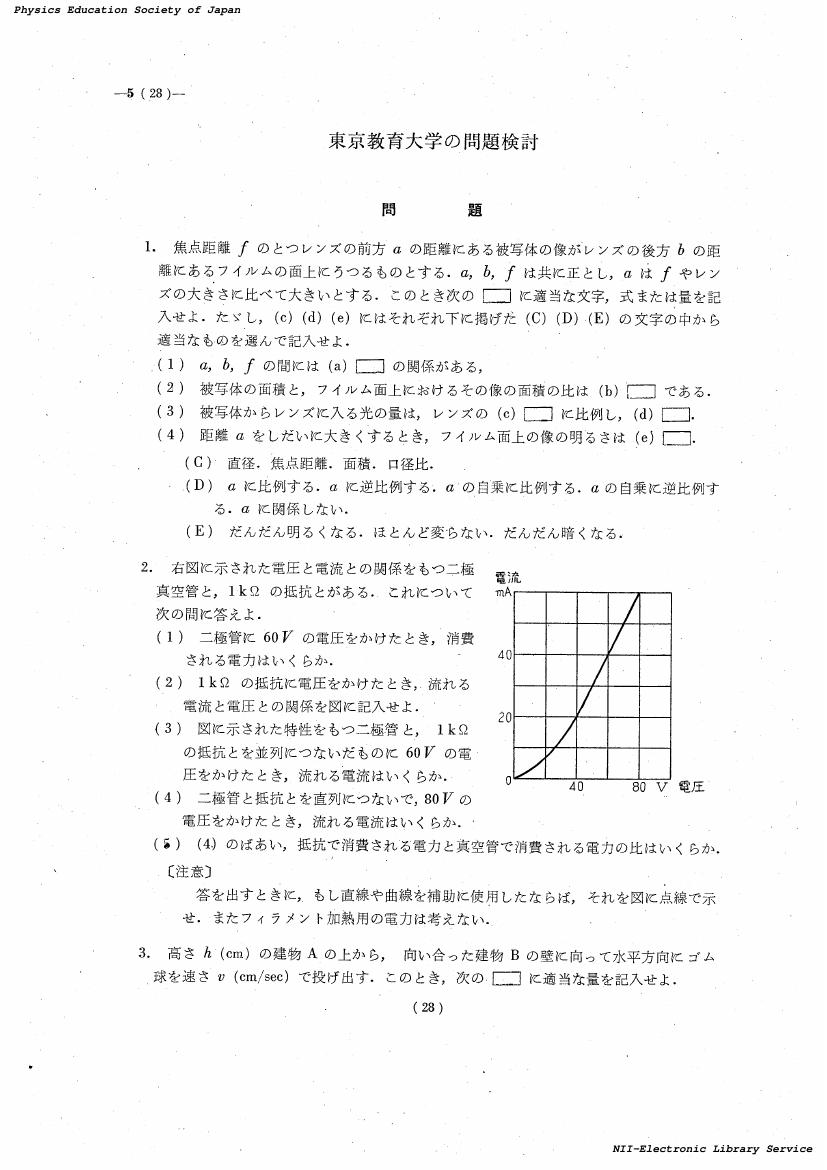3 0 0 0 OA 東京教育大学の問題検討(東京五大学入学試験問題検討座談会)
2 0 0 0 固体延焼の基礎的研究(その3) 無炎延焼中の円柱内の温度分布
- 著者
- 金原 寿郎 遠藤 博 瀬賀 節子
- 出版者
- Japan Association for Fire Science and Engineering
- 雑誌
- 日本火災学会論文集 (ISSN:05460794)
- 巻号頁・発行日
- vol.18, no.1, pp.1-4, 1968
In Part II, it was reported that, when smouldering combustion propagates downward through a vertical rod of radius <i>γ</i> with a constant velocity <i>υ</i>, the distribution of temperature <i>T</i> inside the rod is given by<br><i>k</i>(∂<sup>2</sup><i>T</i>/∂x<sup>2</sup>)+<i>cρυ</i>(∂<i>T</i>/∂<i>x</i>)+2(1/<i>γ</i>+<i>Δ</i>/<i>γ</i><sup>2</sup>)((<i>q</i>/<i>T</i><sub>i</sub>-<i>T</i><sub>a</sub>)-<i>h</i>)(<i>T</i>-<i>T</i><sub>a</sub>)=0 (1)<br>when referred to an ordinate <i>Ox</i> moving downward with the propagation. The constants <i>k, c, ρ</i> are respectively the thermal conductivity, the specific heat and the density of the rod ; <i>Δ</i> the thickness of a stagnant boundary layer assumed to exist around the rod ; <i>T</i><sub>i</sub> the ignition temperature ; <i>T</i><sub>a</sub> the ambient temperature ; <i>h</i> the heat transfer coefficient ; and <i>q</i> is a constant depending upon the chemical composition of the rod and the ambient air.<br>The solution of the equation(1) is, in general<br><i>T</i> - <i>T</i><sub>a</sub>=<i>θ</i>=e<i><sup>-αx</sup></i>(<i>A</i>e<sup>-βx</sup>+<i>B</i>e<sup>βx</sup>) (2)<br>where<br><i>α</i>=<i>cρυ</i>/2k, β=1/2k √<i>c</i><sup>2</sup><i>ρ</i><sup>2</sup><i>υ</i><sup>2</sup>-8k(1/<i>γ</i>+<i>Δ</i>/<i>γ</i><sup>2</sup>)((<i>q</i>/<i>T</i><sub>i</sub>-<i>T</i><sub>a</sub>)-<i>h</i>)<br>and <i>A</i> and <i>B</i> are integration constants. Taking the fire front as the origin of <i>Ox</i>, the boundary condition is<br><i>θ</i>=0, ∂<i>θ</i>/∂x=0 at x=0 (3)<br>As was discussed in Part I, there is no solution of (1) which satisfies (3) in a strict sense, but (3) is fulfilled approximately when<br><i>β</i>=0 (4)<br>This gives us not only <i>υ</i> in terms of <i>c</i>, <i>ρ</i>, <i>k</i>, etc. as<br><i>υ</i><sup>2</sup>=8<i>k</i>/<i>c</i><sup>2</sup><i>ρ</i><sup>2</sup>((1/<i>γ</i>)+(<i>Δ</i>/<i>γ</i><sup>2</sup>))((<i>q</i>/<i>T</i><sub>i</sub>-<i>T</i><sub>a</sub>)-<i>h</i>) (5)<br>but <i>T</i> in the form :<br><i>T</i>-<i>T</i><sub>a</sub>=e<sup>-αx</sup>(<i>C</i>+<i>Dx</i>) (6)<br>where <i>C</i> and <i>D</i> are integration constants.<br>It was reported in Part II that (5) showed remarkable coincidence with experiments. Now in this report, it will be shown that the equation (6), too, coincides satisfactorily with experimental results showing that our theory has got another strong evidence.

